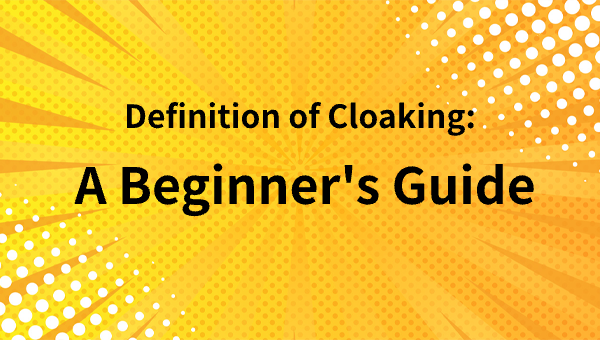Definition of Cloaking: A Beginner’s Guide
Introduction: Understanding Cloaking from the Ground Up
If you’re entering the world of performance marketing, SEO, or advanced ad technologies, you will almost certainly come across the term cloaking. Yet for many newcomers, the concept seems confusing or even suspicious. So what exactly is cloaking? How does it work, and when is it legitimate to use? This guide will provide a beginner-friendly, detailed breakdown of cloaking’s definition, working principles, and legal/ethical boundaries, helping you make sense of one of digital marketing’s most talked-about strategies.
What is Cloaking?
Cloaking refers to the practice of showing different content or URLs to different visitors, usually based on their type (human vs. bot), origin, device, or other characteristics. For example, a search engine bot might see a perfectly clean page, while a human user is redirected to a high-converting landing page. Cloaking’s power lies in its ability to protect campaigns from policy reviewers, competitors, and fraudulent clicks.
Why Use Cloaking?
Campaign Protection: hide sensitive funnel elements from bots or malicious actors
Bypass Review Filters: comply with platform rules while keeping your real landing pages private
Improve Conversion Rates: tailor content specifically to human visitors
Split Traffic: test offers and page variants while shielding them from index crawlers
Cloaking can give advertisers better control over who sees what, maximizing ROI and preserving strategy secrecy.
Core Working Principles
Server-Side Decision Making: most cloaking happens on the server, invisible to the visitor
Filtering Techniques: IP databases, user-agent checks, and behavior patterns help identify bots
Dynamic Redirects: real-time switches based on rules and audience segmentation
Compliance Controls: safe pages to pass audits while delivering different user experiences
Done right, cloaking is seamless for human visitors, yet difficult for platforms to spot.
Is Cloaking Legal?
Cloaking is a neutral technology — its legality depends on usage. Using cloaking to commit fraud, deceive customers, or mislead search engines usually violates policies and can trigger bans or penalties. But using cloaking to protect user data, filter fraudulent traffic, or optimize compliance can be acceptable if done transparently and within platform terms.
Common Beginner Mistakes
Using outdated IP lists
Poorly coded redirects that harm SEO
Forgetting to document rules for compliance
Not testing enough before scaling campaigns
Following best practices from day one is critical to avoid getting flagged.
Conclusion
Cloaking is a powerful but advanced tool that, when handled responsibly, can dramatically enhance advertising safety and results.
If you’d like to discover professional-grade cloaking that is stable, compliant, and scalable, visit adcloaking.com to explore more.

